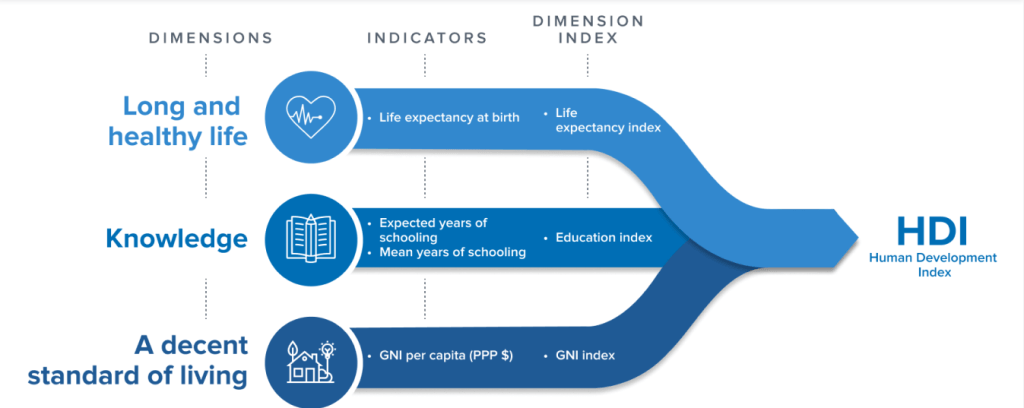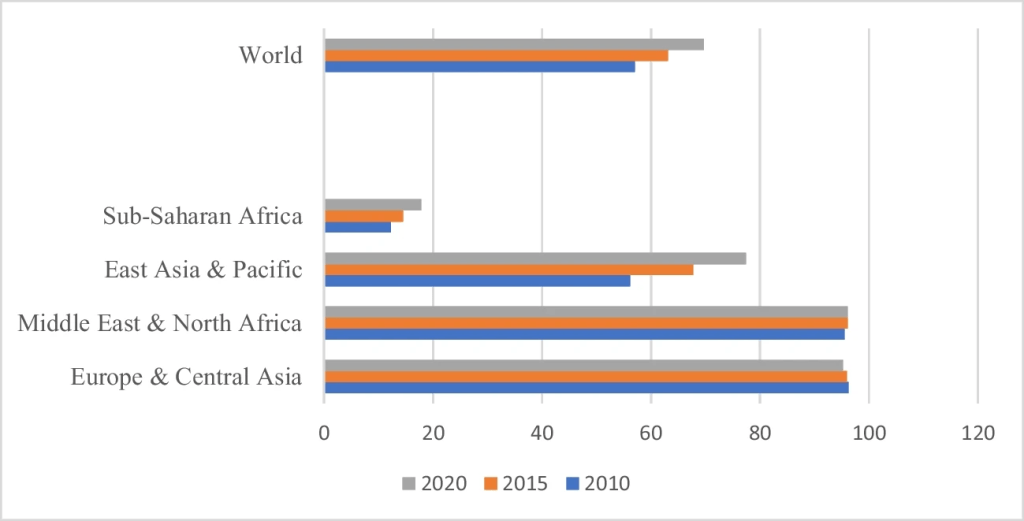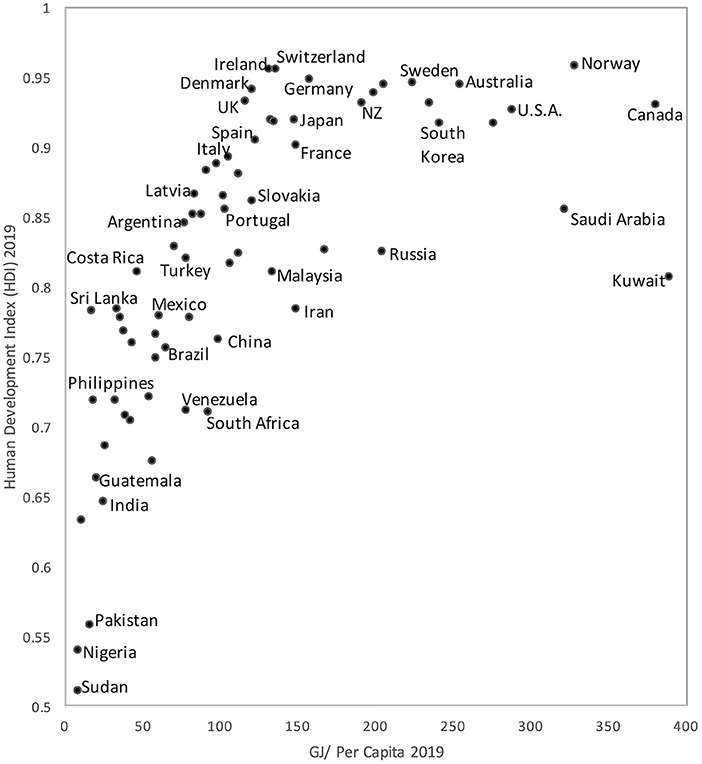Access to energy is vital for poverty reduction, fostering economic growth, enhancing overall living standards, and the development of humans. Energy is necessary for cooking, providing illumination, heating, and cooling. Thus, Energy poverty occurs when people cannot adequately obtain essential amenities to meet societal and physical requirements. Millions of people worldwide experience energy poverty, resulting from a combination of financial, social, and technological factors.
The major obstacle to development in numerous regions of Africa and other developing countries is the absence of affordable energy accessibility. This apparent lack of access to reasonably priced, eco-friendly, and reliable energy services represents a noteworthy obstacle to addressing Sustainable Development Goals.
What is energy poverty?
According to the International Energy Agency (IEA), energy poverty refers to the lack of access to modern energy services and products. These are essential for human well-being. They include household access to electricity and clean cooking facilities that do not cause air pollution in houses.
The world continues to advance towards sustainable energy targets – but not fast enough. At the current pace, about 660 million people will still lack access to electricity. Furthermore, close to 2 billion people will still rely on polluting fuels and technologies for cooking by 2030. (UN 2023).
Lack of access to safe and reliable energy plunges children and their families into total darkness every night, resulting in profoundly distressing consequences for their education and human development, posing health risks, and harming the environment.

Source: Vox
Human Development Index (HDI): a definition
Since 1990, the United Nations developed The Human Development Index (HDI) Using this, they measure various countries’ levels of social and economic development. It is a measure of average achievement in 3 key dimensions of human development: a long and healthy life, being knowledgeable and having a decent standard of living. It provides a comprehensive perspective on human development and accordingly categorizes whether countries are developed, developing, or underdeveloped. Typically, a high HDI correlates with a superior quality of life. HDI indicators comprise factors like GDP, life expectancy, adult literacy, and school enrollment. The HDI is represented as a single numerical value, always less than one. development of humans.

Source: UNDP Human Development Report
Impacts Of Energy Poverty on the development of humans
Energy poverty significantly impacts human development due to the fact that it affects many aspects of life and well-being. Here are some of these impacts:
Health Impacts
Reliance on polluting energy sources causes indoor air pollution which can lead to disease, injury, and death. Around 2.4 billion people worldwide cook using open fires or inefficient stoves fueled by kerosene, biomass and coal, which generates harmful household air pollution, which was responsible for an estimated 3.2 million deaths per year in 2020, including over 237,000 deaths of children under the age of 5.
WHO 2022.
Education
Without access to reliable energy for lighting in areas without electricity, students often have limited study hours. Studying after dark becomes challenging without light, negatively affecting academic performance and educational outcomes.
Worldwide, more than 230 million children attend primary schools that lack electricity. Staggeringly, 217 million of them are concentrated in sub-Saharan Africa, South Asia, and Latin America.
Gender Equality
Lack of access to modern and clean energy has negative impacts on women’s and girls’ health and safety due to their care work burdens. Travelling long distances for hours to collect biomass, women spend up to 18 hours a week collecting fuel for cooking (UNDP 2022). Furthermore, women are disproportionately exposed to indoor air pollution from cooking with dirty fuels, thereby increasing the chance of health risks. All these factors can limit their educational and economic opportunities and perpetuate gender disparities.
Economic Impacts
Inadequate access to ample electricity is anticipated to hinder economic expansion, especially in low-income countries. Such limitations can curtail economic prospects, particularly within the realms of agriculture and small-scale businesses. Insufficient access to energy can potentially obstruct both productivity and income-generating activities.
the development of humans: How Does Energy Poverty Affect the Environment?
A large population in developing economies relies on traditional biomass sources of energy, which contributes to deforestation. The demand for wood fuel leads to the cutting down of trees, which can have serious environmental consequences such as soil erosion, loss of biodiversity, and increased greenhouse gas emissions. Significantly, household combustion emits are responsible for over 50% of the world’s black carbon emissions, which are constituent of fine particulate matter. Black carbon has a per-unit warming capacity ranging from 460 to 1,500 times greater than carbon dioxide, making it one of the primary contributors to climate change, following carbon dioxide. When these emissions from household combustion interact with outdoor air pollutants, they play a role in generating ground-level ozone. Thus, this short-lived climate pollutant reduces crop yields and impacts local weather patterns (UNEP).

Source: SCINCEING
Energy poverty in developing countries
Currently, energy poverty is a serious problem in Sub-Saharan Africa. Addressing this challenge is essential for better socioeconomic and human development outcomes. The global electricity access rate increased from 87 per cent in 2015 to 91 per cent in 2021, serving close to an additional 800 million people. However, 675 million people still lacked access to electricity in 2021, mostly located in the least developed countries (UN report 2023).
According to the latest data, 660 million are projected to remain without access in 2030, of which 85% or about 560 million people will be in Sub-Saharan Africa. Considerable efforts are needed in countries like the Democratic Republic of Congo, Madagascar, Malawi, Niger, Nigeria, Sudan, Tanzania, and Uganda. Together, they represent almost half of the global population without access to electricity in 2030. Numerous Asian developing nations are close to achieving universal access by 2030, with only 70 million still lacking access (IEA 2022).

Source: World Bank Data, Bousnina, R., & Gabsi, F. B. (2023)
Does access to energy improve the development of humans?
Electrification can help increase educational attainment, improve health care, support agriculture development, reduce gender inequality, enhance climate action, and create business opportunities and jobs.
Broadly, in more developed countries, the Human Development Index (HDI) tends to be higher, primarily due to their capacity to offer citizens widespread amenities that facilitate substantial development. Consequently, a correlation arises between energy use and HDI. More developed countries exhibit elevated HDIs, resulting in a general trend where countries with increased energy use also experience higher levels of human development.

Source: Burke et al., (2022)
moving forward
To achieve universal energy access as a main requirement for the development of humans, we need to expedite the process of electrification, boost investments in renewable energy sources, enhance energy efficiency, and establish supportive policies and regulatory structures. The estimated investment needed to attain universal access by 2030 averages around USD 30 billion annually. This encompasses expenses related to power generation, electrical grids, and decentralized solutions. Nevertheless, current investment levels fall considerably short of this requirement. Obtaining financing can be particularly arduous for the least developed nations, which happen to have the widest energy access gap. International assistance is imperative, with concessional finance serving as a pivotal instrument in mitigating the perceived risks for private investors. Simultaneously, national governments must adopt robust electrification strategies and allocate funding to energy access projects systematically.
achieving the United Nations Sustainable Development Goals (SDGs) and how they link to the development of humans
Addressing energy poverty and meeting SDG7 targets has far-reaching effects, influencing and being influenced by progress across various dimensions of other SDGs and human development.
Ensuring that energy services are accessible to the world’s poor aligns with the objective of eradicating poverty SDG1. It directly contributes to achieving substantial reductions in air pollution, which, in turn, improves air quality and human health in SDG3.
Access to energy also contributes significantly to SDG4. Well-lit, adequately heated, and properly cooled schools and households are essential for creating conducive learning environments for children’s development. Furthermore, energy access broadens the range of professions accessible to women and increases opportunities for them, aligning with the objectives of SDG5.
The deployment of renewables and energy-efficient technologies can drive innovation and support national industrial and employment objectives SDG8. Furthermore, expanding renewables and energy efficiency is crucial to keeping global warming below 2°C above pre-industrial levels, aligning with SDG13.
A Thrivable Framework
The THRIVE Framework examines issues and evaluates potential solutions that can support the development of humans. The THRIVE platform is scale-linked, values-based, context-based, and science-based, informed by the natural sciences. Register for our Thrivability Matters Webinar Series where we address the challenges of sustainable development.
You can follow our informative blog and extensive podcast series, as well as join our regular thrivability matters webinar series featuring expert guests in various fields. Sign up for our newsletter to receive regular updates.























